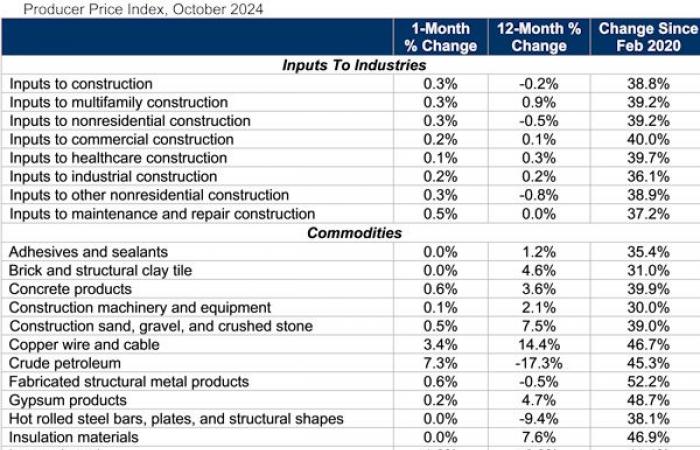Listen to the article
3 min
This audio is auto-generated. Please let us know if you have feedback.
Dive Brief:
- Construction input prices ticked up 0.3% in October, driven by increased costs across all energy subcategories, according to an analysis by Associated Builders and Contractors.
- Despite the cost increase, construction input prices remain 0.2% lower than a year ago, and nonresidential construction input prices are down 0.5% in that period.
- “High energy prices drove the increase in construction input prices observed in October,” said Anirban Basu, ABC chief economist. “While prices for a few other materials, like concrete and copper products, also rose for the month, overall input prices are lower than they were one year ago and have fallen 5% since reaching an all-time high in June 2022.”
Dive Insight:
The uptick in fuel prices will likely be temporary, said Ken Simonson, chief economist at the Associated General Contractors of America. However, the broader uncertainty tied to potential trade policy changes under the incoming Trump administration presents a new layer of unpredictability for contractors.
“A bigger concern is the prospect of across-the-board tariffs that President-elect Trump has said he intends to impose,” said Simonson. “New or increased tariffs have the potential to raise prices for a wide range of construction inputs, including items produced domestically that compete with imports.”
Future prices for crude oil and copper, typically reliable predictors of upcoming producer price index shifts, have recently declined. That indicates the potential for a near-term dip in energy input costs, he said.
Contractors have largely benefited from input price stabilization in 2024. As of October, contractors expect their profit margins to expand through the first quarter of 2025.
That may change next year, as it remains unclear how materials prices will react in 2025 due to proposed tariffs, said Basu.
“The next administration’s trade policy increases uncertainty regarding construction material costs,” said Basu. “Beyond the implications of potential tariffs, input prices may rise in the short term if purchasers rush to import materials prior to the implementation of those policies.”
Swiss






